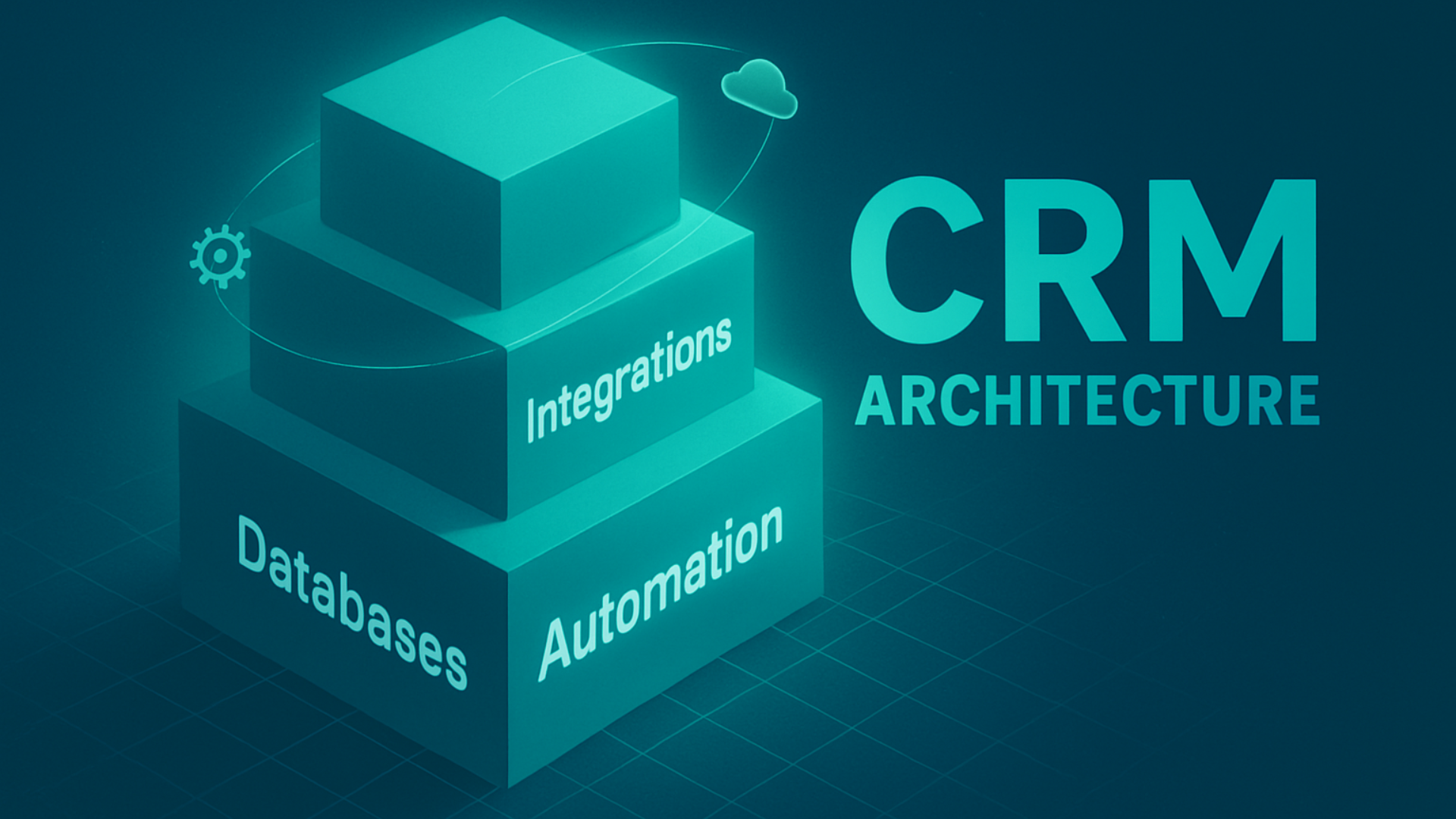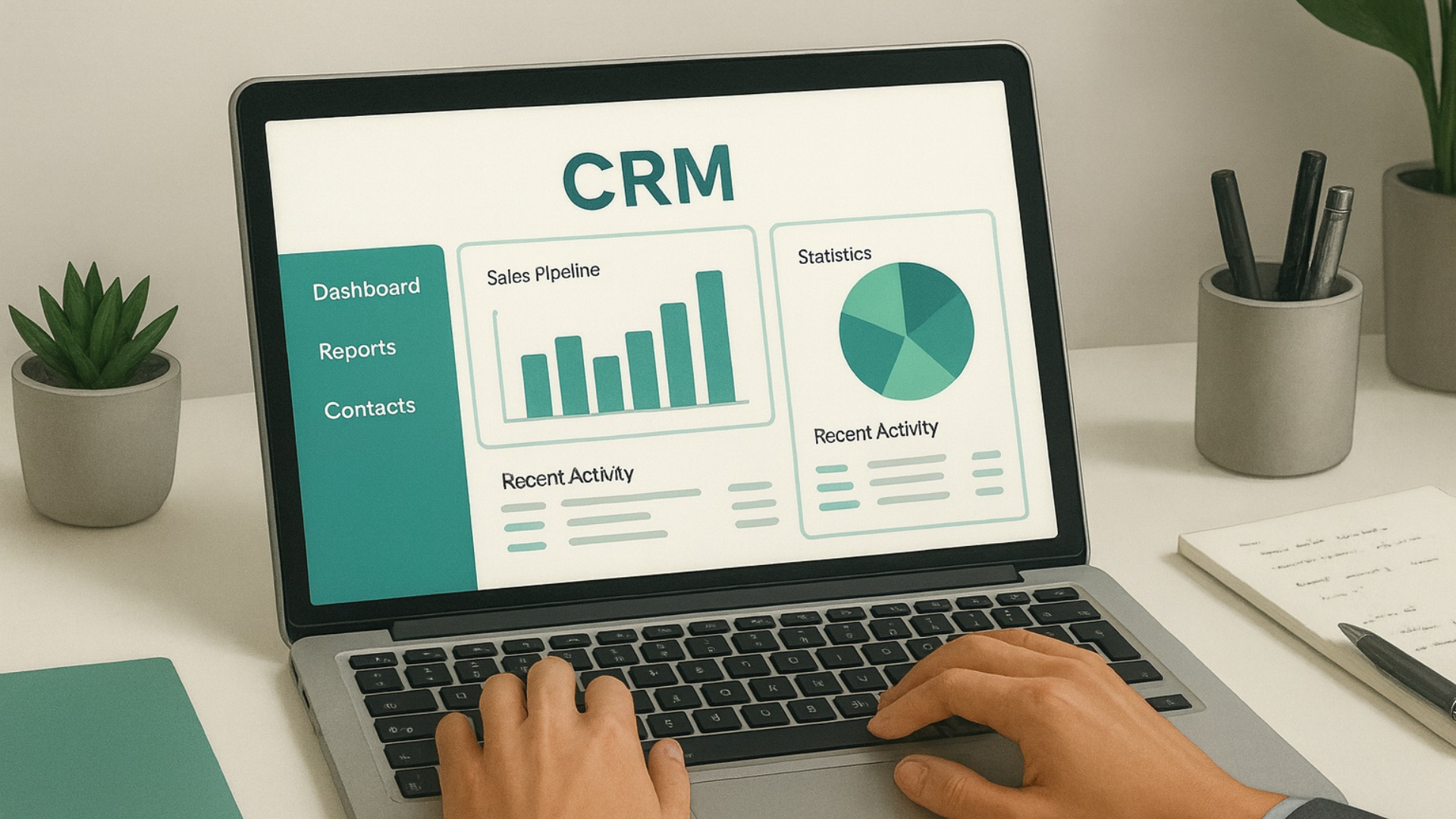

Behind every successful CRM system lies a well-planned architecture that keeps data, processes, and people connected. CRM architecture defines how information flows within the system.
This blog talks about the core components of CRM architecture, its types, challenges and best practices.
What is CRM architecture?
Core components of CRM architecture
The CRM architecture model is built on multiple layers that handle data storage, processing, and user interaction.
Database layer
The database is the foundation of CRM architecture. It stores all customer information ranging from contact details to interaction history, ensuring data accuracy, accessibility and scalability.
Application layer
This is the backbone of CRM system architecture. It processes stored data to support sales automation, marketing campaigns, service management and analytics. Essentially, it’s where the business logic and workflows of the CRM operate.
Presentation layer
This layer converts complex data into visual dashboards and reports for sales and marketing teams.
Integration layer
The integration layer connects the CRM to other business systems like ERP, email marketing tools and social media platforms.This ensures seamless data exchange, unified customer views, and smoother cross-departmental workflows.
Security and compliance
This layer protects customer data through encryption, access control and user authentication. It also ensures compliance with data protection laws such as GDPR, CCPA, and the DPDP Act, maintaining customer trust and data integrity.
Types of CRM architecture models
Two tier architecture
In this model, the client directly interacts with the database. It’s simple, cost-effective, and suitable for small businesses, but it lacks scalability and flexibility for large organizations.
Three tier architecture
This model separates the system into three layers: presentation, application, and database. The application layer acts as a mediator between the user interface and the database, improving performance, security, and scalability. It’s the most commonly used CRM architecture.
Cloud based architecture
In a cloud based CRM, all data and applications are hosted on remote servers managed by the service provider. It offers easy accessibility, automatic updates, and lower upfront costs, making it ideal for businesses seeking flexibility and remote access.
On-premise architecture
This model stores the CRM system and data within the company’s own servers and infrastructure. It provides greater control and customization but requires higher maintenance costs and technical expertise.
Hybrid CRM architecture
A hybrid model combines both on-premise and cloud-based elements. It allows businesses to keep sensitive data on local servers while leveraging the cloud for scalability and remote access.
Modern CRMs like Superleap combine these layers through a secure, cloud-based architecture that scales with business needs.
Challenges in designing CRM architecture
Designing CRM architecture involves balancing scalability, security, and usability.
Data integration complexity
Combining data from multiple sources like sales, marketing, and customer support systems can be difficult, often leading to data silos and inconsistencies.
Scalability and performance
As customer data grows, maintaining system performance and ensuring the architecture can scale efficiently becomes a major challenge.
Customisation vs standardisation
Finding the right balance between customising the CRM to fit unique business needs and maintaining standard, easily upgradable features can be tricky.
Security and compliance
Protecting sensitive customer data and meeting regulatory requirements (like GDPR or HIPAA) demand robust security measures and constant monitoring.
User adoption and usability
Even the best designed architecture can fail if users find it complex or unintuitive. Ensuring a smooth, user-friendly experience is essential for widespread adoption.
Integration of emerging technologies
Incorporating AI, automation, and analytics tools into existing CRM systems adds value but also increases architectural complexity.
Cost and resource constraints
Developing and maintaining a scalable, secure and integrated CRM system requires significant investment in technology, skilled personnel and support.
Best practices for CRM architecture implementation
Successful CRM system architecture implementation requires planning, collaboration, and regular optimization.
- Establish specific business goals to guide CRM design and ensure alignment with organisational needs.
- Engage teams across departments to create a system that supports real world workflows.
- Maintain clean, accurate and unified data through strict standards and regular validation.
- Implement robust data protection measures.
- Choose a scalable architecture that supports integration with future technologies like AI and predictive analytics.
- Regularly evaluate system performance and user feedback to enhance efficiency.
Superleap CRM follows these principles by combining modular design, secure access control, and built-in automation workflows.
Heading text
Nunc sed faucibus bibendum feugiat sed interdum. Ipsum egestas condimentum mi massa. In tincidunt pharetra consectetur sed duis facilisis metus. Etiam egestas in nec sed et. Quis lobortis at sit dictum eget nibh tortor commodo cursus.
Odio felis sagittis, morbi feugiat tortor vitae feugiat fusce aliquet. Nam elementum urna nisi aliquet erat dolor enim. Ornare id morbi eget ipsum. Aliquam senectus neque ut id eget consectetur dictum. Donec posuere pharetra odio consequat scelerisque et, nunc tortor.
Nulla adipiscing erat a erat. Condimentum lorem posuere gravida enim posuere cursus diam.
.svg)




.png)
